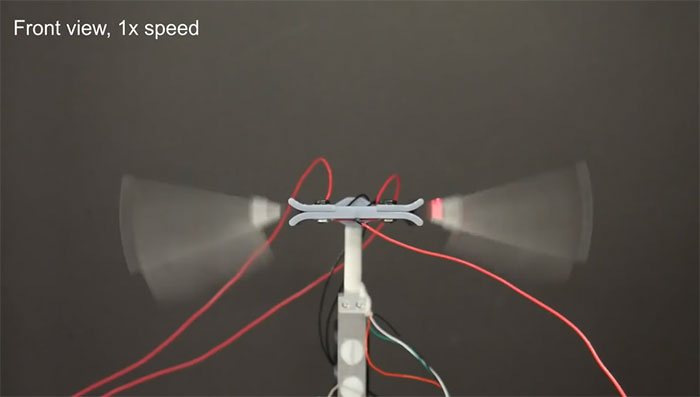The University of Bristol in the UK has successfully developed a robot that can flap its wings and generate more energy than insects of similar size.
When it comes to flying robots, researchers primarily use designs based on propeller engines. Although biologically inspired flapping methods have proven to be much more effective, replicating them in machines remains a significant challenge. The use of motors, gears, and drive systems to achieve flapping motion adds complexity and weight to the overall robot, leading to many undesirable effects.
Led by Professor Jonathan Rossiter, a team of researchers at the University of Bristol has recently successfully developed a direct-drive artificial muscle system, allowing the robot to achieve flapping motion without the need for rotating parts or gears.
Insect-inspired flapping robot developed by the University of Bristol. (Video: SoftLab Bristol)
Called the Liquid Amplifying Zipper Actuator (LAZA), the mechanism includes an electrode immersed in a liquid dielectric that moves up and down by activating an electric field above and below it, using oppositely charged electrodes. The research team then added two wings and adjusted the thrust generated by the flapping motion.
“With LAZA, we apply electrostatic force directly to the wings, rather than through a complex, inefficient drive system. This results in better performance and a simpler design, unlocking the development of ultra-light flying vehicles at low cost for future applications,” said Dr. Tim Help, one of the developers of the LAZA system.

Liquid Amplifying Zipper Actuator.
The researchers tested the system for over one million flapping cycles to demonstrate that robots built with this mechanism can perform long-distance flight. They also found that their prototype generates more energy than the insect it is inspired by, achieving a flight speed of 0.71 m/s.
“LAZA is a significant advancement for ultra-small autonomous flying robots like insects—machines that promise to perform many critical environmental tasks such as pollinating crops or searching for missing persons in collapsed buildings,” Rossiter added in a press release.


















































